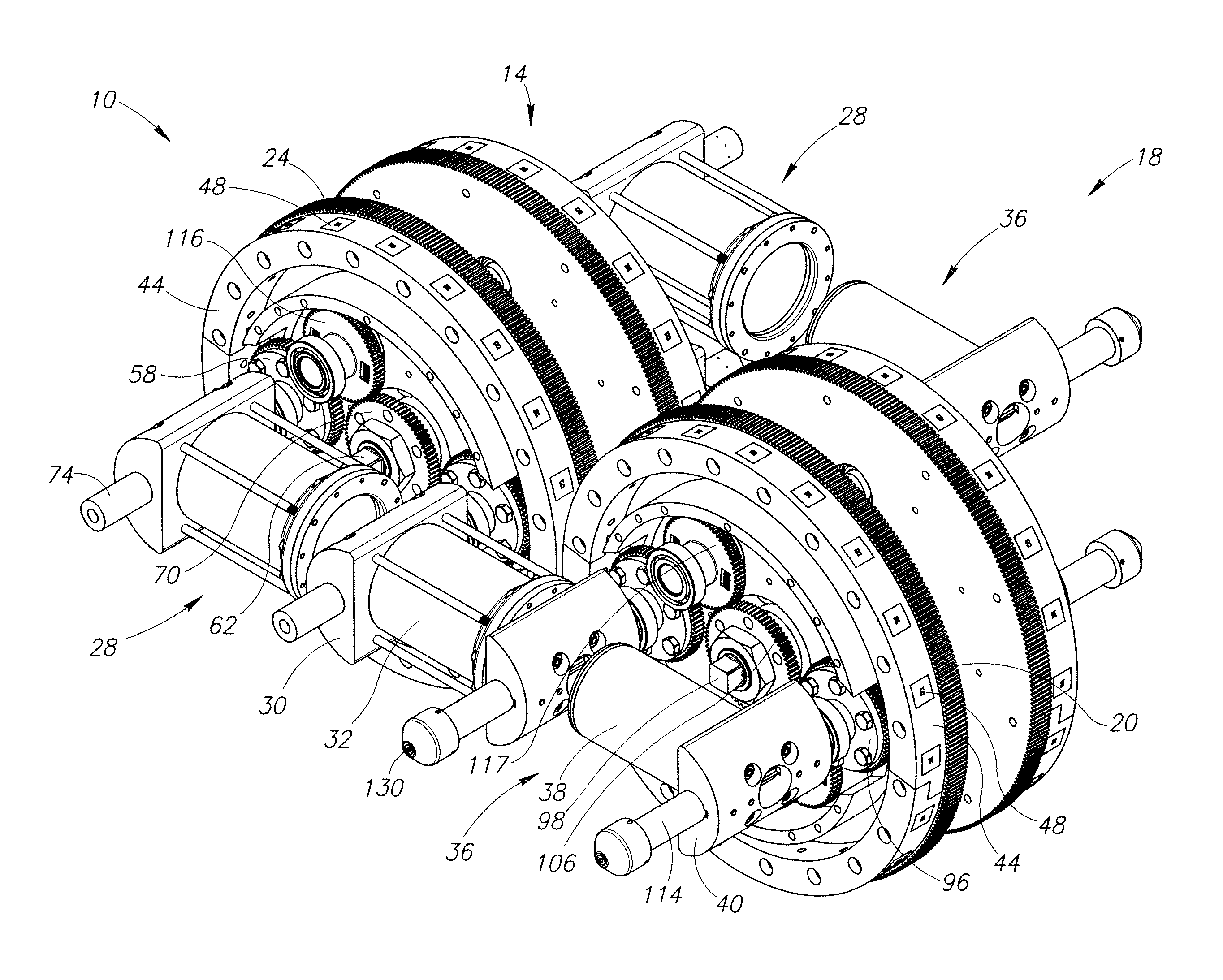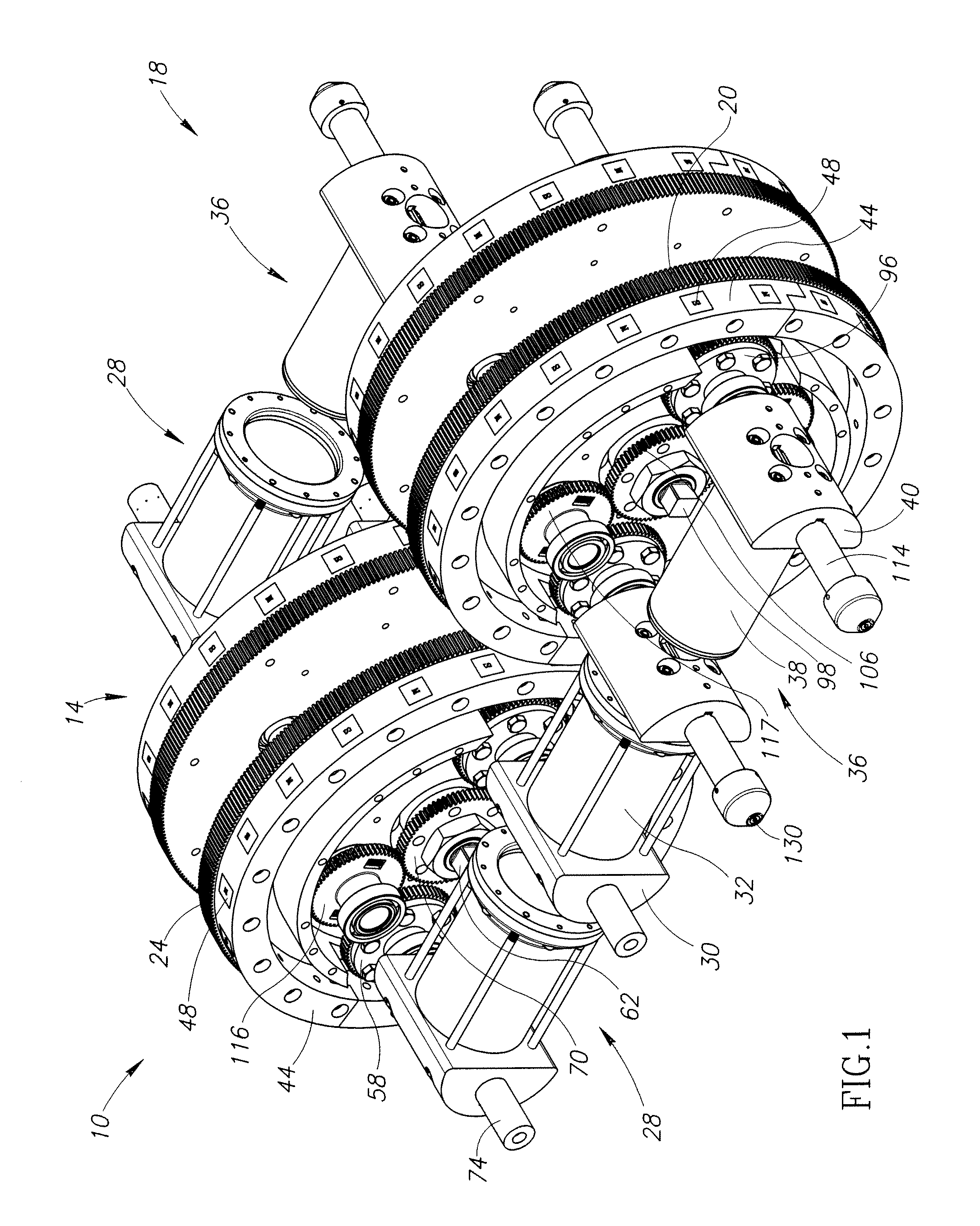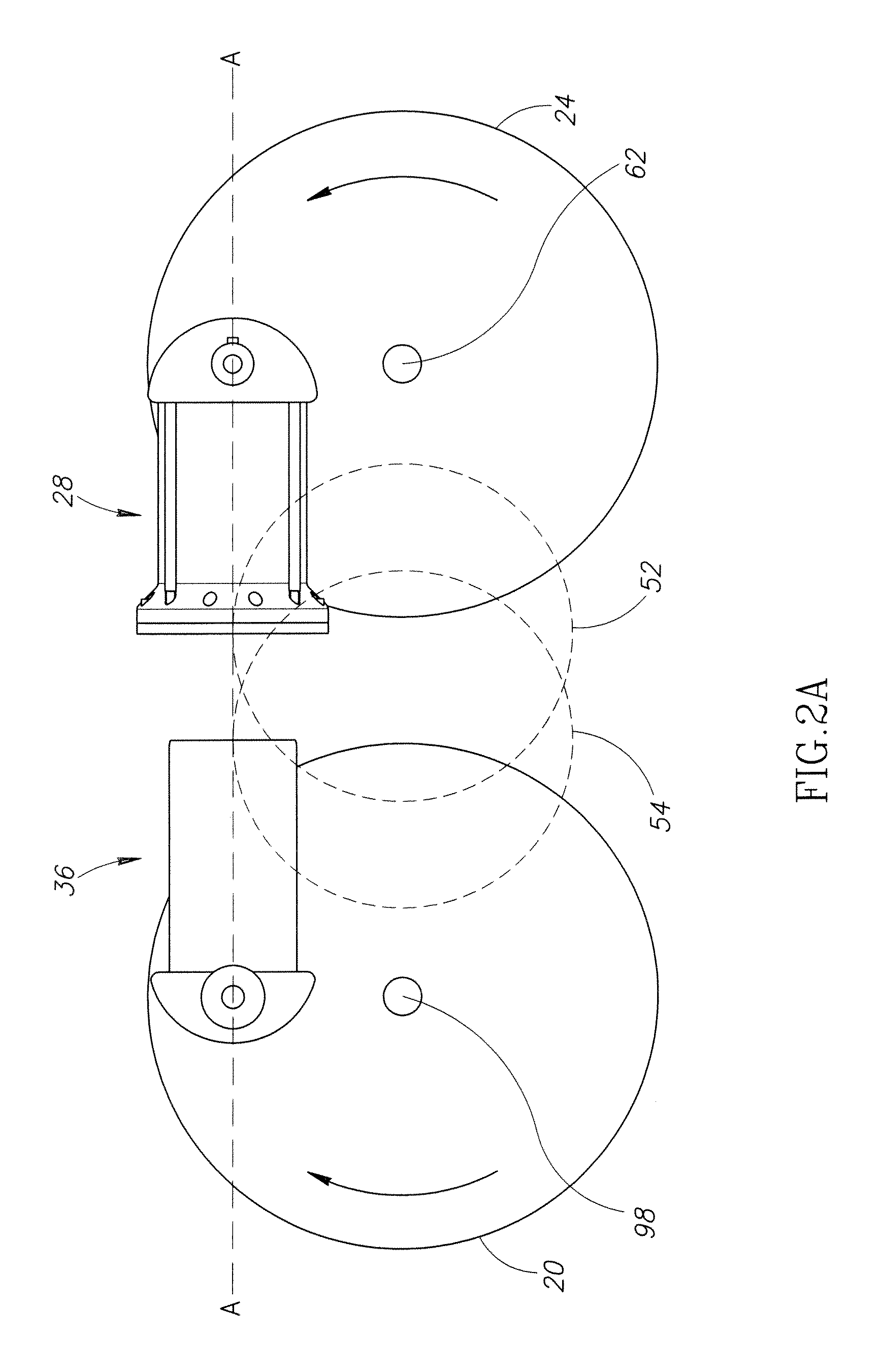Orbital, non-reciprocating, internal combustion engine
a technology of internal combustion engine and reciprocating piston, which is applied in the direction of machines/engines, liquid fuel feeders, mechanical apparatuses, etc., can solve the problems of side loading of the piston against the cylinder wall, frictional losses, and remain energy-consuming effects, and achieves improved engine efficiency and simplicity, low cost, and high strength
- Summary
- Abstract
- Description
- Claims
- Application Information
AI Technical Summary
Benefits of technology
Problems solved by technology
Method used
Image
Examples
Embodiment Construction
[0030]With reference now to the drawings in detail, and particularly FIG. 1, a piston drive wheel assembly 18 and a cylinder drive wheel assembly 14 for a combustible fluid-operated orbital engine 10 is shown. A fully assembled view of the engine 10 is shown in FIG. 13. The cylinder drive wheel assembly 14 comprises two substantially mirrored sets of two cylinders 28, and the piston drive wheel assembly 18 comprises two corresponding substantially mirrored sets of two pistons 36. The pistons 36 each comprise a piston head 40 coupled to a piston axle or shaft 114, and a piston body 38. The cylinders 28 each comprise a cylinder head 30 coupled to a cylinder axle or shaft 74, and a cylinder sleeve 32 configured for receiving a piston 36. Each of the pistons 36 are arranged so that they are at all times in opposed relation on a common longitudinal axis with a corresponding cylinder 28. As shown in FIGS. 2A-2D, the cylinders 28 and pistons 36 are configured for orbital motion along inter...
PUM
 Login to View More
Login to View More Abstract
Description
Claims
Application Information
 Login to View More
Login to View More - R&D
- Intellectual Property
- Life Sciences
- Materials
- Tech Scout
- Unparalleled Data Quality
- Higher Quality Content
- 60% Fewer Hallucinations
Browse by: Latest US Patents, China's latest patents, Technical Efficacy Thesaurus, Application Domain, Technology Topic, Popular Technical Reports.
© 2025 PatSnap. All rights reserved.Legal|Privacy policy|Modern Slavery Act Transparency Statement|Sitemap|About US| Contact US: help@patsnap.com



